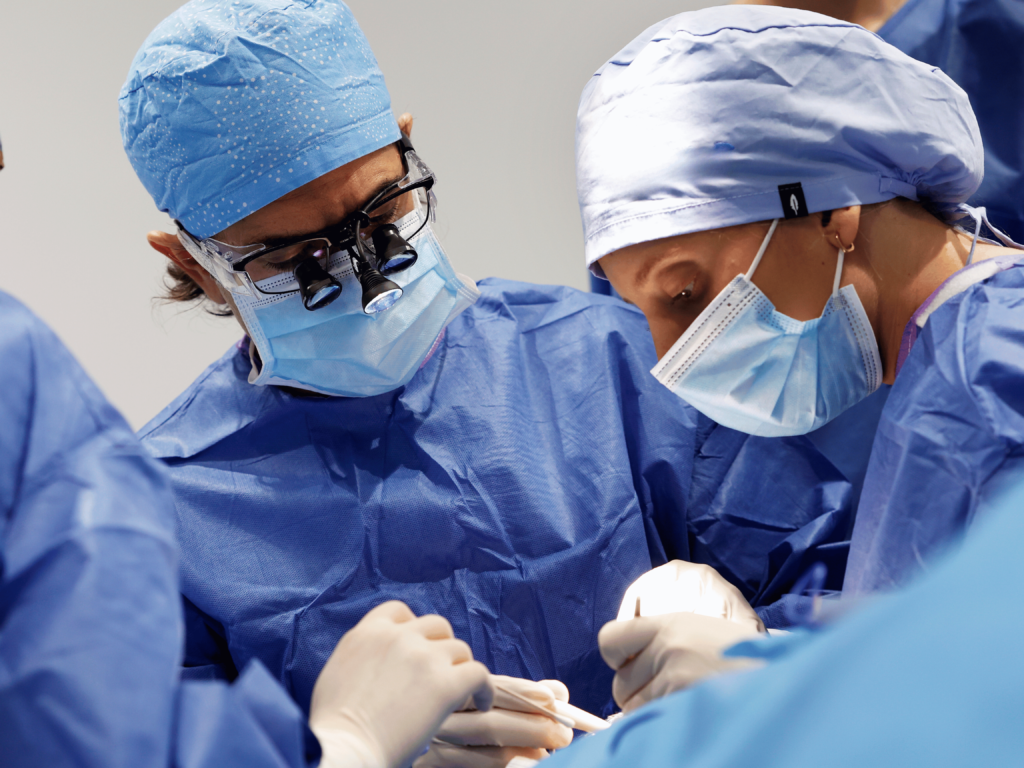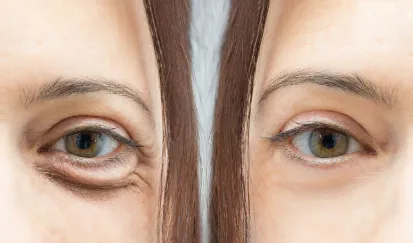
What are upper and lower blepharoplasty and how do they differ?
Blepharoplasty is a surgical procedure through which excess fat or skin, which is responsible for the formation of fat bags that age the appearance of the eyes, is removed from the eyelids. However, this surgery not only improves facial aesthetics, but also the quality of vision, as it reduces the patient’s field of vision. It is the most widespread eyelid treatment in the world and is performed on both the upper and lower eyelids. However, the suitability of its application, its evolution and the postoperative recovery vary depending on which eyelids it is performed on.
Differences between upper and lower blepharoplasty
Both upper and lower blepharoplasty are safe procedures with an almost total effectiveness rate. The use of laser technologies, as we do at the Grupo Miranza clinics, reduces the complications of both to a minimum during the course of the procedure and at the recovery stages, resulting in two surgeries that offer great benefit and very little inconvenience. However, beyond the area of the eye where they are performed, they differ in their final aims and surgery stages, as they require different methods to achieve them.
Upper blepharoplasty
When is upper eyelid blepharoplasty indicated?
Cellular aging of the human body causes a functional deterioration of many mechanisms. One of these, which is closely linked to eye health, is the production and regulation of fat in the eyelids, which generally leads to a tired appearance. When this occurs in the upper eyelids, hence affecting a person’s appearance and self-esteem, upper blepharoplasty is usually recommended. Furthermore, this plastic surgery procedure is perfect for patients with excess skin on the upper eyelids, as aging causes a very unaesthetic loss of elasticity in them.
The process of upper blepharoplasty
The upper blepharoplasty procedure starts with the administration of local anaesthesia and continues with very precise incisions in the natural folds of each upper eyelid. The use of advanced laser technology results in invisible scars. Once the incisions have been made, the relevant tissue is removed, which can be either skin or fat, or both. Finally, the incisions are sutured with maximum precision, and bandages are applied to reduce the swelling resulting from the surgery. Excellent patient satisfaction rate.
The postoperative period after upper blepharoplasty: possible after-effects and scarring
Part of the very high satisfaction of upper blepharoplasty patients is due to the postoperative stage. Unlike other cosmetic surgeries, there are no visible scars that affect the aesthetics of the patient. However, as with any surgery of a certain complexity, recovery lasts a short period of time, during which swelling, bruising and sometimes dry eye are common, but at an intensity that does not limit your daily activity. Furthermore, recovery can be accelerated by following the recommendations of our specialised ophthalmologists.
Before and after upper blepharoplasty
Upper blepharoplasty, when performed by experts who master it and have the right technology, makes a big difference in a patient’s appearance. After all, the gaze is a person’s main point of reference, the place where the eyes of others are directed. In that sense, the surgery will result in more defined upper eyelids, with less sagging skin and greater freshness. However, these results do not last forever as the aging process continues, but it usually takes years for a new surgery to be required.

Lower blepharoplasty
When is lower eyelid blepharoplasty indicated?
The most common reason for lower eyelid blepharoplasty is the presence of fat bags under the eyes, which are caused by genetics, lifestyle and the loss of elasticity of the muscles around the eyes due to the passage of time. Moreover, excess skin under the eyes also has a negative impact on their appearance, which is why it is usually removed through this aesthetic surgery. Finally, blepharoplasty can help correct dark circles under the eyes that strongly affect their appearance.
The process of lower blepharoplasty
Lower blepharoplasty begins in the same way as upper blepharoplasty: by administering local anaesthesia and sedation. This makes the surgery much more comfortable and pain-free for the patient. The incision is then made under the lower eyelashes or, sometimes, depending on the person, inside the lower eyelids. Either way, both result in an invisible scar. The surgeon will then remove any fat or skin, tighten the skin under the eyes to reduce wrinkles and close the incisions with delicate sutures.
The postoperative period after lower blepharoplasty: possible after-effects and scarring
As with the postoperative stage of upper blepharoplasty, a number of temporary symptoms, such as swelling, bruising or redness in the treated area, often occur at the postoperative stage of lower blepharoplasty. You may also feel unusual tightness of the eyelid skin. These after-effects usually subside within a week and disappear completely after about a month. Again, following medical advice, such as avoiding sun exposure or intense physical exercise, will promote recovery.
Before and after lower blepharoplasty
Lower blepharoplasty is the most effective treatment for correcting excess fat or skin under the eyes. The results are noticeable within the first few days. However, although the vast majority of people can undergo this treatment, some are not suitable for it due to specific conditions. To find out for sure, we recommend that you go to your nearest Miranza clinic and rely on professionals who will study, diagnose and suggest the most appropriate treatments.